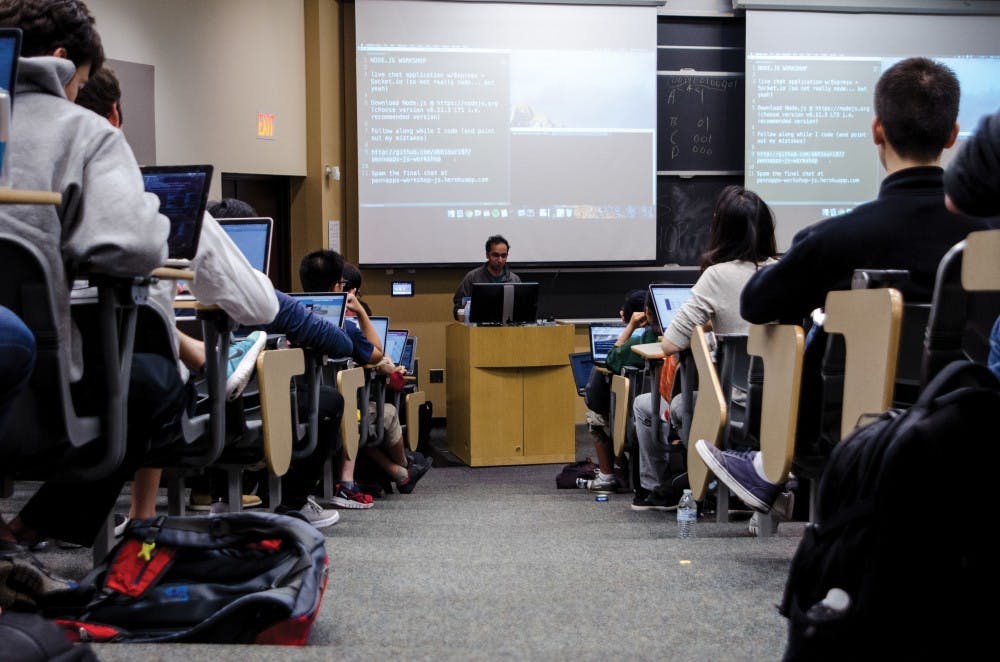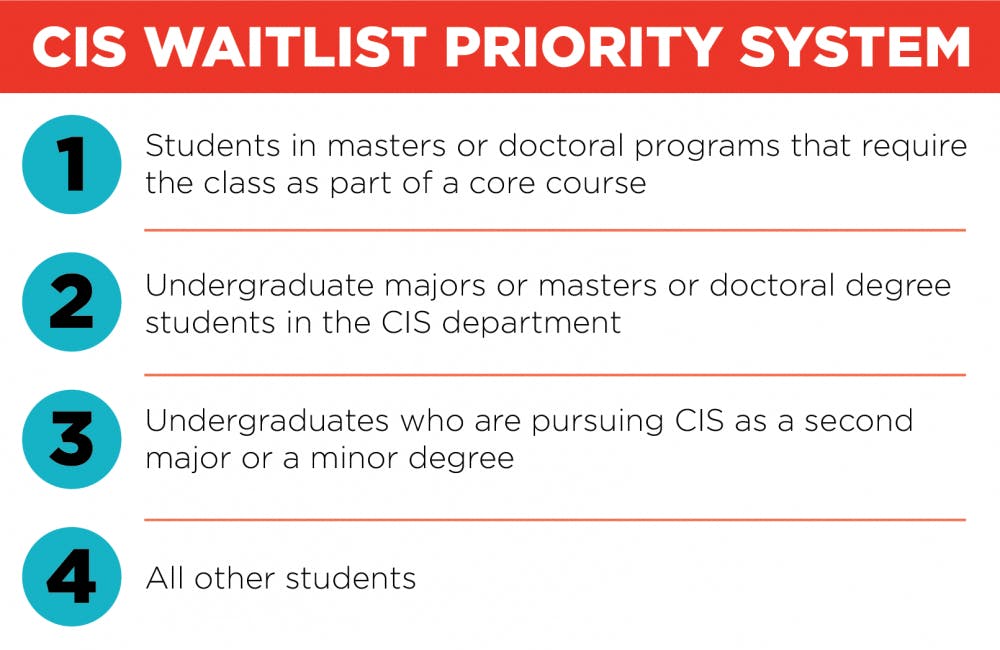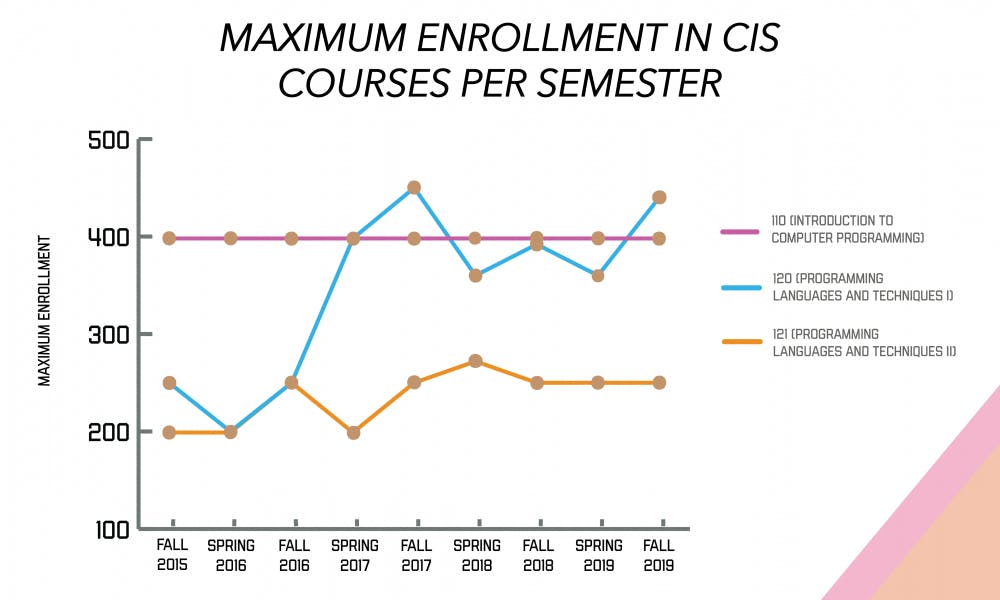
Advanced registration began on Monday, and the availability of CIS classes continues to be a hot-button topic among students.
In the past few years, the number of CIS majors at Penn has risen from 400 to about 1,000 students. But at the same time, the number of seats available in many of the Computer and Information Science Department’s most popular courses has remained constant or only slightly increased.
Across universities nationwide, the number of CIS majors has more than doubled since 2011, and more than tripled since 2006, according to the Computing Research Association. The number of non-majors in CIS courses has increased at an equal or greater rate.
High demand for these courses — from CIS majors, CIS minors, and students taking CIS courses as electives — has left Penn students struggling to satisfy major and minor requirements because they are stuck on long waitlists for mandatory courses.
In the spring of 2018, there were more than 377 students on the waitlist for the CIS elective "Applied Machine Learning," which caps enrollment at 150. The maximum enrollment for this course has only increased by 25 seats since fall 2015. And even when students get into an introductory CIS course, teaching assistants are so overloaded that there are wait times of more than an hour to get help on homework assignments.
The CIS waitlist system gives priority to CIS majors and a lower level of priority to undergraduates pursuing CIS as a second major or a minor. Consequently, students interested in taking a CIS course as an elective have even greater difficulty getting off course waitlists.

This runs contrary to the University’s stated commitment to interdisciplinary studies. Penn’s policy allowing students to take courses across the four undergraduate schools is an empty promise if many of the Engineering School’s most popular courses are effectively closed off to non-majors and minors.
Limiting students’ access to introductory programming courses may especially disadvantage students from groups underrepresented in computer science.
“When you put any kind of barrier in place in terms of access to computer science majors, it tends to reduce the number of women and students of color in the program,” Harvey Mudd College President Maria Klawe told the New York Times earlier this year.

In response to student interest in gaining programming skills, the CIS Department said in spring 2017 that it was working to create a “richer selection” of CIS courses that would appeal to non-majors. But by fall 2018, the department had scrapped these plans, citing its struggles to meet demand for existing courses and online programs.
The University is well-aware of these problems. In the past, CIS Department administrators have told the Daily Pennsylvanian that they are "painfully aware of the high demand” but simply do not have the resources to meet this interest.
It is unacceptable that the University has allowed this problem to spiral out of control, failing to add faculty and resources in the CIS Department even as the gap between demand and course offerings has increased drastically. No student should have to drop a second major or even a minor because they are unable to enroll in the courses they need to graduate on time. Penn must take immediate steps to hire more faculty — and allocate more resources in general — for the CIS Department in order to meet demand for courses in the field.
Editorials represent the majority view of members of The Daily Pennsylvanian, Inc. Editorial Board, which meets regularly to discuss issues relevant to Penn's campus. Participants in these meetings are not involved in the reporting of articles on related topics.
The Daily Pennsylvanian is an independent, student-run newspaper. Please consider making a donation to support the coverage that shapes the University. Your generosity ensures a future of strong journalism at Penn.
Donate







